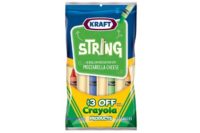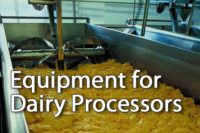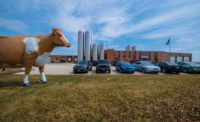

Probiotic cultures and the cultured dairy beverage kefir were virtually unknown to the average American consumer in 1986. But the Lifeway Foods launch of signature kefir and probiotic cheese production from its original Skokie, Ill., production facility quickly began to change consumer awareness. Fast-forward to August 2010: Morton Grove, Ill.-based Lifeway Foods now owns four processing facilities and a distribution center and is launching new products such as BioKefir shot-style drinks that directly compete with internationally-known cultured yogurt drink offerings.
Lifeway grew its initial 1986 kefir offerings of four lowfat and one whole milk variety to more than a dozen lowfat, nonfat, lowfat organic and whole milk organic varieties by the mid-‘90s. Capacity at the original Skokie facility became strained, and in 1999 Lifeway shifted kefir production (and its headquarters) to nearby Morton Grove, Ill.
At the time, the 50,000-square-foot production facility had sufficient space to produce and store its multiple kefir varieties and unit sizes. But as the company’s distribution and product development initiatives grew, the facility faced challenges caused by its limited refrigerated space (10,000-square-feet) and lack of a dedicated milk receiving area, explains Edward Smolyansky, Lifeway’s chief financial and chief operating officer.
“It started to get extremely inefficient and difficult,” Smolyansky recalls, noting delivery from one milk tanker took up half the facility’s loading space, making it challenging to meet ever-increasing distribution needs. With an eye on meeting increased demand and future product line expansions, in 2004 Lifeway purchased its 110,000-square-foot distribution facility in Niles, Ill., just a few blocks away from the Morton Grove processing operation. “The purchase in 2004 was one of the few turning points, or lynchpin events. Without it, we wouldn’t be here today. Now we have so much refrigeration space and so many docks,” Smolyansky says.

Morton Grove is the main kefir processing center, and also produces a limited variety of cheeses. The original Skokie facility is now solely dedicated to cheese production. The Niles facility provides 50,000 square feet of refrigerated storage space for finished products storage and distribution needs, plus an additional 60,000 square feet of dry storage and office space. The Illinois facilities handle 80 percent of Lifeway’s kefir production. In addition, the company has a manufacturing facility in Sauk Center, Minn., (acquired in the 2006 purchase of Helios Nutrition Inc.) and another in Philadelphia (acquired in 2009 the Fresh Made Dairy facility).
Ongoing product development over the years combined with 2010’s multiple launch initiatives has expanded the Lifeway lineup to encompass nearly 30 retail products. Original kefir offerings remain a mainstay, organic kefir continues to be a fast-growing segment, and popular organic milk ProBugs kids’ kefirs are up for new product sizes and flavors. In addition, Lifeway is rolling out a full roster of specialty kefirs, unique holiday flavors and the August 2010 launch of the new, five-flavor BioKefir line in 3.5-ounce bottles.
“BioKefir is our first major new product development since we started to make kefir 24 years ago,” Smolyansky says. “It’s even bigger than ProBugs.”

Kefir Keys
Cultured milk-based Lifeway kefir products have a 70-day shelf life and require constant refrigeration. To maintain freshness and product quality, Lifeway uses the just-in-time processing method to process order-specific kefir runs, Smolyansky explains. “Many times the product is made within five business days of the time it’s placed on the retailer’s shelf,” Smolyansky says.Kefir production begins when tanker trucks of milk arrive at the Morton Grove facility from dairy farms in Wisconsin or Iowa. All milk is sourced from farms with growth hormone-free pledges. Milk is pumped through a network of ceiling-height pipes that pump the milk to 55 1,500-gallon tanks.
Once inside the tanks, milk is pasteurized, cooled, mixed with Lifeway’s proprietary mix of 10 cultures, fermented and flavored. It is then piped to the appropriate filling line.
The newest of the fillers is behind this month’s launch of 3.5-ounce Lifeway BioKefir shot-style probiotic kefir. The high-speed filler is equipped with a shrink sleeve label applicator and can convert to meet production needs of other unit sizes. By year-end, a second new filler is expected to be online. The two-year project utilizes existing space freed up by the addition of the distribution facility. It also includes a new set of 22 1,500-gallon tanks. The addition of the new lines was a two-year undertaking, Smolyansky says.
The facility’s three dedicated 32-ounce fillers include one high-speed filler with a shrink label applicator. In addition, the facility has one line dedicated to 8-ounce bottles and two additional flexible pouch filling lines for its kid-friendly ProBugs products (packaged in unique curvy, flexible pouches with patented no-spill spouts).
Once filled, the kefirs are boxed or palletized and temporarily stored in the 10,000-square-foot cooler space in Morton Grove to await transfer to the Niles distribution facility. The 50,000 square feet of cooler space at its distribution facility provides dedicated areas for finished product storage as well as palletizing/wrapping operations and assembly of cases such as four-packs of ProBugs.
Lifeway handles some local distribution in vans emblazoned with images of the company’s brand and products. The remainder of distribution is handled by third-party distributors, Smolyansky says.
Historically-low 2009 milk prices benefited Lifeway, particularly compared to record-high pricing in 2008, Smolyansky says. “It’s given us a ton of free cash flow and brought our costs down.” Reduced costs combined with increased volume have also allowed Lifeway to pass savings on to consumers, he adds, noting economic conditions mean “a large portion of our population is looking to save money on groceries wherever they can.”
Recently, the company has seen an increase in organic production, which calls for special attention during production, Smolyansky says. As its products volume in the natural market increases, Lifeway has noted consumer increased interest in eco-friendly packaging options. As a result, Lifeway is researching environmentally friendly packaging alternatives. It currently purchases carbon credits that offset 100 percent of its carbon footprint with renewable energy, Smolyansky says.
Editor’s Note: Portions of this coverage originally appeared in sister publication Beverage Industry (February 2010 issue).

At a Glance: Lifeway Foods Processing Operations
Plant Locations: Main plant in Morton Grove, Ill.; supporting production in Skokie, Ill.; distribution in Niles, Ill. (three facilities located within 1.5-mile area). Two smaller facilities added via acquisitions in Minnesota (Helios Nutrition-2006) and Pennsylvania (Fresh Made Dairy Inc.-2009).Year plant built/opened; years of additions/renovations: Morton Grove opened in 1999 when production needs outgrew original Skokie, Ill., facility (now utilized solely for cheese production). Two-year Morton Grove production expansion project nearly complete in August 2010, adds two fillers (one currently online) and pasteurization capacity to existing space freed up by 2004 addition of Niles refrigerated raw milk receiving/distribution/office space.
Size: 50,000-square-feet in Morton Grove; 110,000-square-feet in Niles.
Number of employees: 250 total (200 in Illinois, 20 in Minnesota and 30 in Pennsylvania).
Products made: Full line of kefir products (conventional and organic) in Morton Grove, probiotic cheeses (mainly Skokie, small runs in Morton Grove).
Main plant pasteurization type/units/capacity: 33 original 1,500-gallon tanks plus new in 2010 set of 22 1,500-gallon tanks; tanks multi-task to handle pasteurization, fermenting, ingredient additions.
Main plant filling lines/types: New high-speed 3.5-ounce filler with shrink label applicator launches full-scale production in August 2010; three 32-ounce bottle fillers, including one high-speed with shrink label applicator; one 8-ounce bottle filler; and two flexible pouch packaging filling lines.
Storage capacity: 82,500 gallons total pasteurizer tank storage and 10,000-square-foot refrigerated finished product storage in Morton Grove; 50,000-square-foot refrigerated raw milk receiving and distribution in Niles plus 60,000-square-feet for dry storage/office space.


